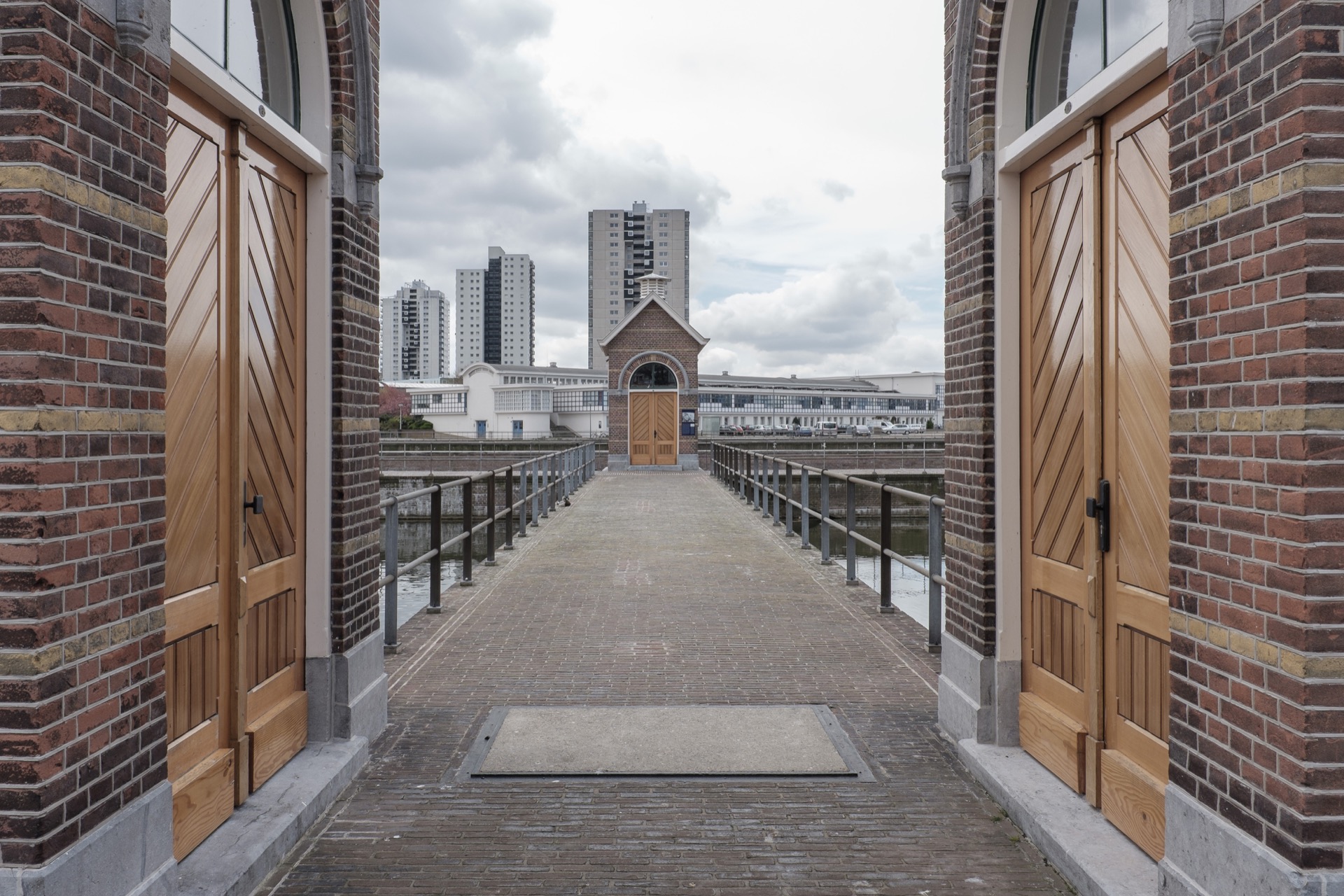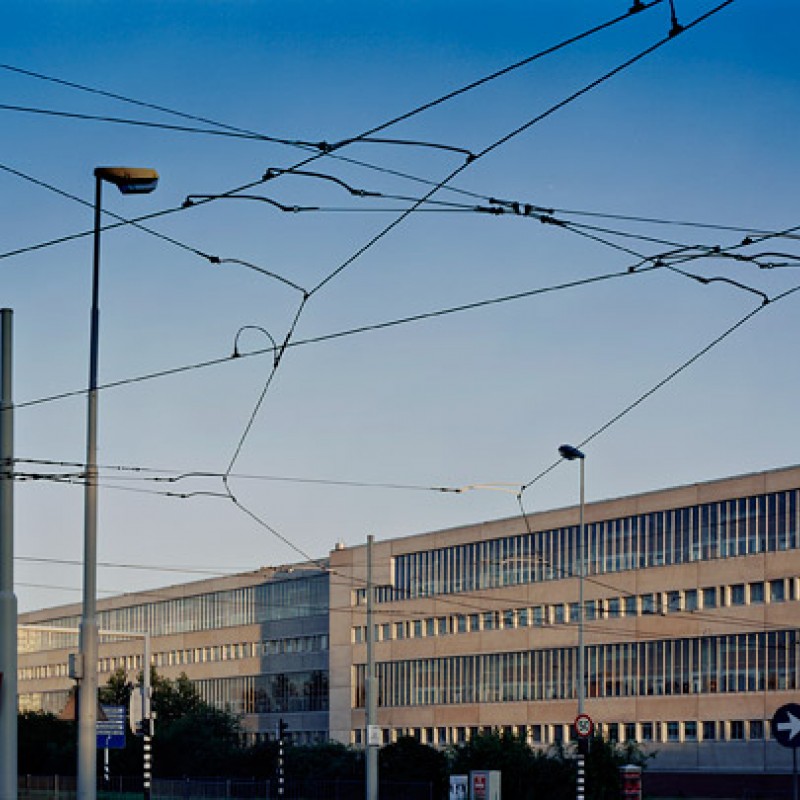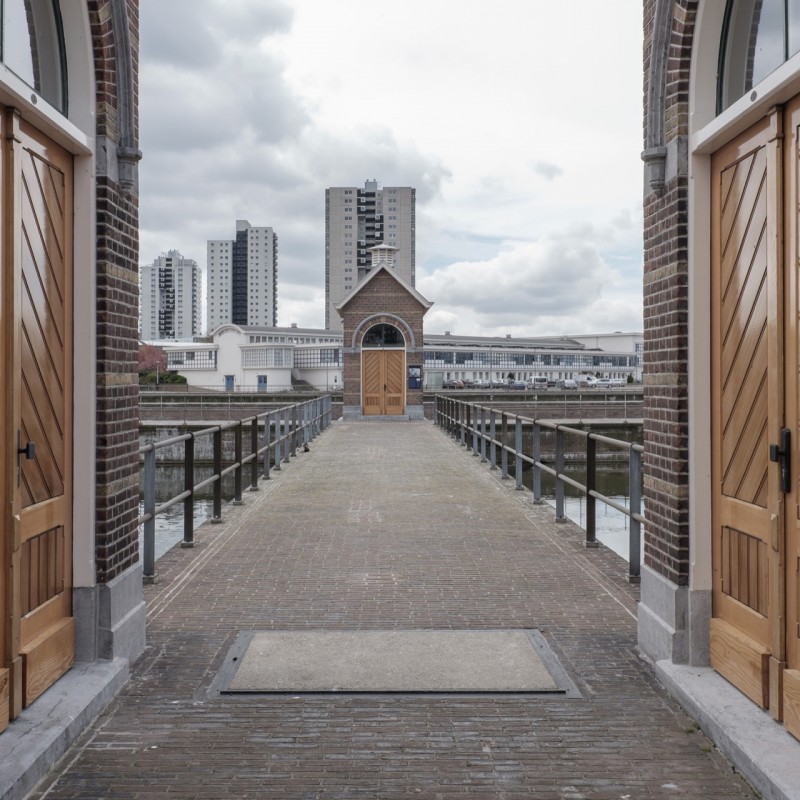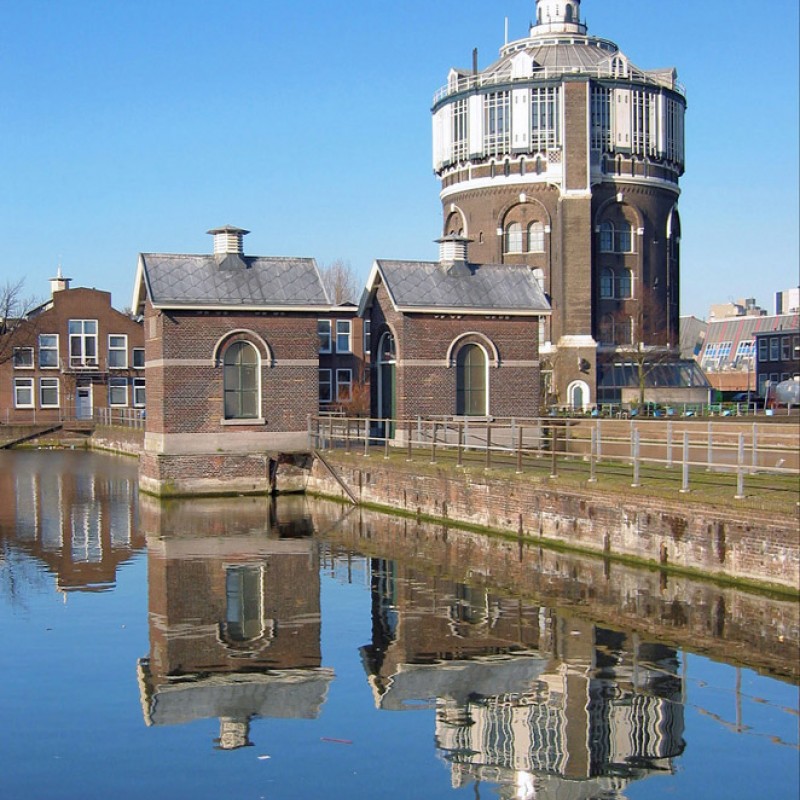DWL Terrein
Rijnwaterstraat 10, 3063 HC Rotterdam, Netherlands
| Former Use: | Drinking water company |  |
| New Use: | Mixed use (Housing, office, neighbourhood facilities) | |
| Category: | Office, Residential | |
| Original Architect: | C. van der Tak (1874), Van der Steur (1928) | |
| Reuse Architect: | Various | |
| Construction year(s): | 1874 - 1950 | |
| Reuse year(s): | 1977 - 1986 |
Description:
The Rotterdam Drinking Water Company (DWL) complex was built in 1873 at the Oude Plantage in the extension of the Honingerdijk, far beyond the then city limits. Until then, the residents of Rotterdam took their drinking water out of the polluted canals resulting in regular cholera epidemics. Rose had previously argued for more hygienic water management system. In the new complex, designed by city architect Van der Tak, river water was purified in two large settling tanks and four smaller filter boxes. A 48-meter-high round water tower, with a 1000-m3 reservoir at the top of the building, was designed in a mixture of Romanesque, Neo-Renaissance and Moorish style. After the closing of the DWL in 1977, the site was transformed into a residential area. A number of existing buildings have been maintained and made suitable for a new function. The water tower, which was put into use by the living / working community Utopia in 1978, was given a residential / office function. It was the first step of the metamorphosis of an industrial complex to a residential area, the subdivision of which is based on the pattern of the original filter basins. The former pumping station has been converted into a neighborhood and shopping center and the director's residence into a medical center. The original filter buildings have been converted into homes for single and double households. [...] The size of the houses is based on the size of the original filter boxes on which they are built. This has resulted in an exemplary reuse project with unprecedented spatial quality for these types of homes. The central filter building was restored in 1985 by the current user Kraaijvanger Urbis. (4)
Relevant Literature:
- Oude fabrieken Nieuwe functies.Herbestemming industrieel erfgoed, Zeist: PIE, 36-37
- De Boer, H., Bruinsel, R., Hoogendoorn, R., Kloosterman, H., te Selle, H. & Wassenaar, B. 1995. Oude fabrieken nieuwe functies: Herbestemming industrieel erfgoed, Zeist, PIE.
- https://rotterdamwoont.nl/neighbourhoods/view/14/De_Esch_DWL_terrein
- http://www.architectuurgids.nl/project/list_projects_of_typeofbuilding/typ_id/3/prj_id/461


